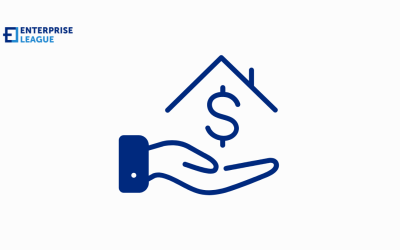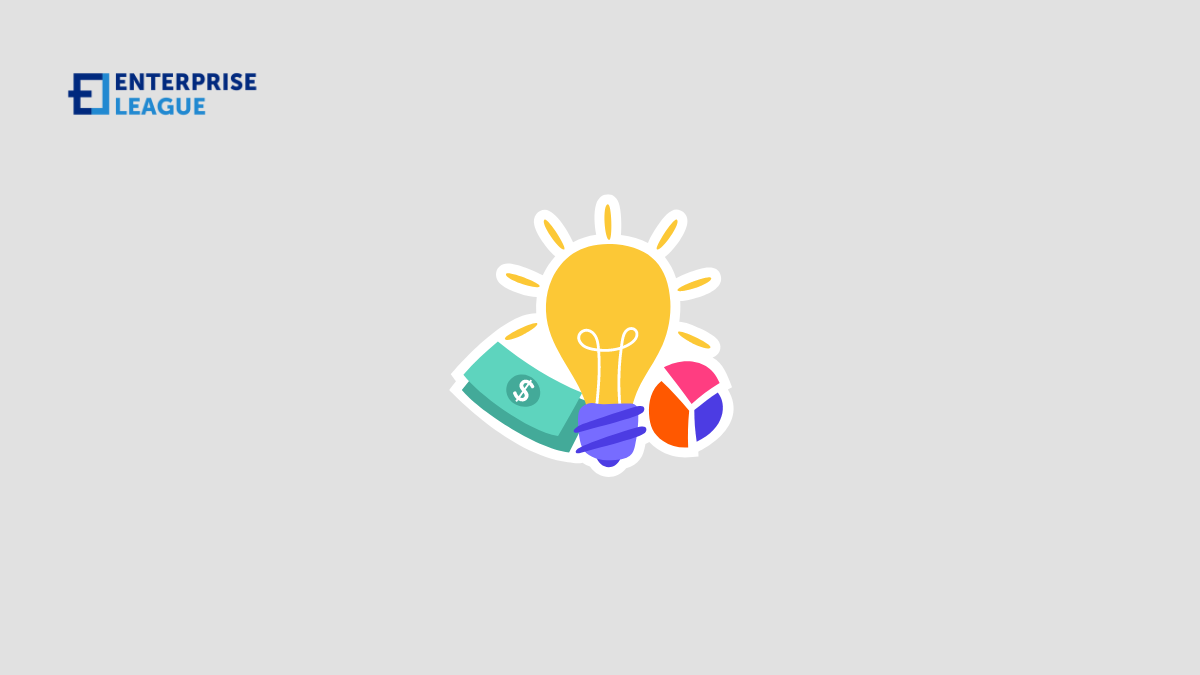In a world of cryptocurrencies, decentralized applications (dApps) have emerged as game-changers, reshaping how we interact with technology and finance. Dapp Delve takes you on a thrilling exploration of the vast landscape of crypto apps. From decentralized finance (DeFi) to non-fungible token (NFT) marketplaces and more, we delve into the inner workings, potential impact, and challenges of dApps.
Join us on this captivating journey through the world of dApps, as we unravel their intricacies, analyze their impact, and envision a future shaped by decentralized innovation. This article is your guide to understanding the evolving landscape of crypto apps.
Understanding Dapps and their function in the crypto space
Dapps are decentralized applications that run on a blockchain or peer-to-peer network, offering benefits such as increased security and transparency compared to traditional centralized apps.
Definition and functionality of Dapps
Decentralized applications (Dapps) are an innovative class of software programs that function on a blockchain or peer-to-peer computer network, instead of conventional centralized servers. These Dapps leverage the intrinsic advantages of decentralization to provide increased security, transparency, and control for users.
For example, one prominent Ethereum-based Dapp is MakerDAO, a decentralized finance (DeFi) platform allowing users to borrow cryptocurrencies by depositing digital assets as collateral. As opposed to traditional loan systems managed by banks or financial institutions, the borrowing process within MakerDAO is entirely controlled through preset rules encoded in smart contracts.
Components of Dapps
Dapps or decentralized applications have three essential components: the user interface, the smart contract, and the blockchain. The user interface is the gateway for users to interact with Dapps and can be a website, a mobile app, or even a desktop program. The smart contract is an algorithmic piece of code that gets executed on top of a blockchain and defines how transactions between users will occur.
For instance, CryptoKitties is one example of a popular Dapp where players buy and trade digital cats using Ethereum. The user interface in CryptoKitties is through its website, while its smart contracts govern ownership rights for each kitty.
Overall these three components make up what allows Dapps to function as trustless entities in peer-to-peer networks without reliance on centralized servers while ensuring transparency in transactions’ recording actions between participants.
Benefits and drawbacks
DApps have a lot of benefits, especially when compared to traditional centralized apps. One significant advantage is their decentralized nature, which means they are not controlled by any single entity or authority. This creates transparency and trust in the system, making it difficult for bad actors to manipulate or hack the network.
However, there are also some drawbacks to using Dapps. Firstly, since they are new technologies, some Dapps may not be fully developed yet and can have bugs and security issues that could lead to possible losses or hacks.
Secondly, most Dapps currently rely on blockchain systems such as Ethereum, which has scalability issues and high gas prices that may make some transactions expensive.
Overall though, the benefits outweigh the drawbacks as more users join this new frontier of web3 technology with its potential applications beyond just finance but also in areas such as governance and social media platforms where decentralization improves data integrity whilst giving consumers control over how they want their information used.
Popular Dapps
This section will provide an overview of some of the most popular Dapps currently available, including examples of how they can be used and their benefits in the crypto space.
Overview of popular Dapps
There is a diverse range of decentralized applications (Dapps) available for crypto traders to explore. One of the most popular DApps is Uniswap, which runs on the Ethereum network and allows users to trade cryptocurrencies without intermediaries like centralized exchanges.
Another popular DApp is Aave, which enables users to borrow and lend cryptocurrency through smart contracts. Other notable Dapps include MakerDAO, a stablecoin provider; CryptoKitties, a blockchain-based game that involves collecting digital cats; and Chainlink, an oracle system that connects smart contracts to real-world data sources.
Examples of Dapps and how they can be used
There are countless Dapps available to crypto traders, each with its unique use case. For instance, Uniswap is a popular decentralized exchange (DEX) that allows users to trade cryptocurrencies without intermediaries or centralized authorities.
Another example is CryptoKitties, a game built on the Ethereum blockchain that enables users to buy and sell digital cats using Ether. Torrent websites like BitTorrent allow P2P file sharing of large files faster than traditional cloud services without any restrictions on downloading speed or amount of data transferred.
Finally, Gnosis Safe has created a suite of smart contracts for managing digital assets securely while enabling multi-sig wallets, meaning multiple parties can co-own one wallet with specific permissions defined by the contract.
Types of Dapp browser platforms
Explore the top DApp browser platforms such as Metamask and Trust Wallet, their features, and how they work to enhance the user experience when using decentralized apps on the blockchain.
Overview of Dapp browsers
Dapp browsers are web browsers that allow users to view and interact with decentralized applications (Dapps) on the blockchain. These browsers enable users to access Dapps without the need for a middleman or central authority, making them decentralized and secure.
Some popular examples of Dapp browsers include MetaMask, Trust Wallet, and Coinbase Wallet. These platforms make it easy for crypto traders to connect their accounts and start using Dapps immediately.
With these tools, traders can easily switch between different Dapp chains and enjoy all the benefits of decentralized finance (DeFi).
Top Dapp browser platforms
There are several Dapp browser platforms available for crypto traders to explore and use. Here are some of the top options:
- MetaMask: This browser extension is a popular choice for Ethereum users, as it allows them to interact with Ethereum-based Dapps directly from their web browsers.
- Trust Wallet: Owned by Binance, this mobile wallet allows users to store various cryptocurrencies and also supports Dapp browsing.
- Coinbase Wallet: Another mobile wallet option that supports Dapp browsing, Coinbase Wallet also offers users the ability to buy and sell cryptocurrencies directly from the app.
- Opera: This web browser has integrated a crypto wallet and Dapp browsing capabilities into its platform, making it a convenient all-in-one option for those who want to explore the world of decentralized apps.
- Status: A mobile-first platform, Status offers a built-in wallet and Dapp browser as well as features like encrypted messaging and decentralized payments.
These are just some of the top DApp browser platforms available for crypto traders to use when exploring the world of decentralized applications. Each comes with its own set of features and benefits, so it’s worth researching which one aligns best with your specific needs and preferences.
Features and how they work
Dapp browsers are specialized web browsers designed to interact with decentralized applications. They have various features that make them unique, including the ability to access blockchain networks securely and efficiently. Dapp browsers have a similar structure as traditional internet browsers, but they differ in their architecture and functionality.
One of the essential features of Dapp browsers is their capacity to generate blockchain transactions securely. These transactions enable users to perform activities such as sending or receiving cryptocurrencies without any intermediaries. Additionally, many Dapp browsers use encryption technology to protect user data from hackers and other malicious entities.
Another key feature of Dapp browsers is interoperability between different apps built on different blockchains. Users can move assets easily between different chains using these types of platforms.
Overall, Dapp browsers are still evolving, with more advanced functionalities added regularly by developers worldwide amidst security concerns about existing models in use; these advancements could shape the future direction for decentralized application development and usage further moving forward into Web3’s era!
The future of the Dapp market
The future of the Dapp market is promising, with advances in technology and increasing trust and security measures.
Advances in Dapp technology
One exciting aspect of DApps is the constant advancement of their technology. With each new development, DApps become more efficient, user-friendly, and secure. Some significant advances include improvements in consensus mechanisms and enhanced privacy solutions such as zero-knowledge proofing and sharding technology.
Moreover, developers are working on creating new types of smart contracts to enhance the functionalities provided by DApps further. For instance, DeFi (decentralized finance) represents a revolutionary concept that has been made possible by DApp technology. As a result, there have been thousands of decentralized financial applications built on Ethereum alone with an aggregated value locked in these apps reaching over $100 billion at some points in time during 2021 and 2022.
Trust and security in the Dapp market
One of the biggest benefits of DApps is the trust and security they provide to users. DApps are decentralized, meaning that there is no single point of failure or control.This makes them less susceptible to hacks and fraud compared to traditional centralized applications.
However, as with any technology, it’s important to take precautions when using DApps. Users should ensure they are downloading from reputable sources and verify the authenticity of any smart contract code before interacting with it.
The evolution of DApp technology continues to improve trust and security measures in the industry. For example, newer consensus mechanisms like proof-of-stake reduce energy consumption while increasing network security.
Overall, one of the primary reasons people turn towards decentralized applications is due to their increased trustworthiness compared with centralized alternatives – given that users interact with them securely without misplacing passwords or keys!
While there have been notable hacks in past years- which have since driven developers towards greater efforts regarding transparency- participants must still take heed not only when selecting but also interacting within Dapps built on blockchains that operate openly across borders without sovereign influence for intermediaries’ intervention at this early stage in their development cycle wherein governance structures remain nascent still evolving over time- whilst continuously upgrading features through community feedback loops improving overall UX/UI gradually within each iteration release updates onwards-and-upwards from here on out till future times ahead!
Impact on the industry
This innovation has caught the attention of many industries beyond just cryptocurrency and blockchain. For example, supply chain management can benefit from Dapps to enhance traceability and reduce fraud in product tracking. The gaming industry can also benefit from Dapps by creating more transparent systems for rewards distribution.
Comparison of leading Dapp chain ecosystems
Compare the top Dapp chains such as Avalanche, Polkadot, Ethereum, and Binance Smart Chain to determine their pros and cons and make an informed decision on which ecosystem best suits your needs.
Overview Of Dapp chains
DApp chains are blockchain networks that are specifically designed to support the development and deployment of decentralized applications. A few popular examples of DApp chains include Ethereum, Binance Smart Chain, Polkadot, and Avalanche. As a crypto trader looking to invest in DApps or utilize them for your business operations, it’s essential to understand how different DApp chains work and evaluate their capabilities based on your specific needs.
Comparison of 4 leading Dapp chain ecosystems
In this section, we’ll compare the four leading DApp chain ecosystems: Avalanche, Polkadot, Ethereum, and Binance Smart Chain, highlighting their pros and cons for crypto traders.
Pros and cons of each ecosystem
Avalanche, Polkadot, Ethereum, and Binance Smart Chain are some of the leading DApp chain ecosystems. Avalanche is known for its high throughput and fast transaction processing speeds. It also boasts low fees compared to other chains. Polkadot offers scalability through interoperability with different blockchains, allowing developers to build cross-chain applications easily. The community-driven governance model ensures development efforts align with user needs rather than a central authority’s decisions.
Ethereum takes pride in supporting the highest number of DApps among all blockchain platforms. The platform also has a large development community dedicated to creating innovative decentralized applications with smart contracts helping improve the functionality frequently as well as offering powerful defi solutions.
Decentralized finance is an emerging sector providing primitive financial products such as lending without intermediaries or KYC compliance on cryptocurrencies held in wallets capable of interacting with these protocols contractually on-chain without resorting to fiat currencies or traditional banking institutions highly relevant for eliminating middlemen from transactions, therefore, increasing efficiency while at the same time cutting costs.
Finally, Binance Smart Chain has lower gas fees than Ethereum which provide more affordable alternatives, especially for newbie investors interested primarily in yield farming projects. Determining which one best fits investor priorities mainly depends on their experience, investment goals, and risk appetite.
How to get started using Dapps
To get started using Dapps, you will need to set up a crypto wallet, find and use different Dapps securely and stay informed about best practices
Setting up a crypto wallet
To get started using DApps, you’ll need to set up a crypto wallet. A crypto wallet allows you to securely store, send and receive cryptocurrencies. Here’s how:
- Choose a reputable wallet provider: Be sure to do your research and choose a trusted wallet provider with good reviews.
- Create your account: Once you’ve chosen a provider, create an account by following the registration process.
- Secure your account: Enable two-factor authentication (2FA) and create a strong password to protect your account from unauthorized access.
- Fund your wallet: To use DApps or buy cryptocurrencies, you’ll need to fund your wallet using fiat currency or other cryptocurrencies.
- Find compatible DApps: Look for DApps that are compatible with your specific wallet type and network.
- Start exploring!: Now that you have everything set up, it’s time to start exploring the world of decentralized apps on the blockchain!
Remember to keep your private keys safe and never share them with anyone, as they give access to your funds in the wallet. With these steps, you can start using DApps on various blockchains without worrying about security issues associated with centralized applications.
Finding and using Dapps
Finding and using Dapps can be very challenging, especially for new crypto traders. Here are some steps to follow:
- Research: Start by researching popular Dapp browsers such as MetaMask, Trust Wallet, or Coinbase Wallet. These browsers help you access decentralized applications easily.
- Crypto wallet: Set up a crypto wallet that supports Dapps. Some popular examples include MyEtherWallet (MEW), Ledger Live, and Trezor.
- Verify the source: Before deciding to use any Dapp, verify the source, and its reputation and check if it has been audited by a third party.
- Explore popular Dapps: To get started with Dapps usage, try exploring popular ones like Uniswap, Compound Finance, or MakerDAO.
- Test with small amounts: Always test with small amounts before committing large investments to understand how the app works and its transaction fees.
- Community support: Joining relevant communities on social media platforms will keep you updated on the latest developments in the world of DeFi apps.
- Security best practices: Follow best security practices like using 2-factor authentication, avoiding phishing links, and keeping passwords safe to ensure your assets are safe when using these apps.
By following these steps, you’ll be on your way to discovering and maximizing the potential of Dapp technology in the growing crypto landscape.
Best practices for security
Ensuring the security of your DApps and crypto assets is crucial. Here are some best practices to follow:
- Use a hardware wallet: Hardware wallets keep your private keys offline, making them less vulnerable to cyberattacks.
- Choose strong passwords: Avoid using easily guessable passwords and use a combination of upper and lower case letters, numbers, and special characters for added security.
- Keep software up-to-date: Regularly update your DApp browser, operating system, and anti-virus software to protect against vulnerabilities.
- Don’t share private keys: Never share your private keys or seed phrases with anyone as this gives them access to your crypto assets.
- Verify URLs: Always double-check the URL of the DApp you are using before entering sensitive information like public or private keys.
- Research DApps before using them: Do your due diligence on any DApp you plan to use by investigating their reputation, code quality, and security measures in place.
Following these best practices will help ensure that you can enjoy using DApps without compromising your security or losing your crypto assets.
Conclusion
Dapps are a significant innovation in the crypto and blockchain space. Decentralization is at the heart of DApps, making them more secure, transparent, and trustworthy than traditional apps. The future of DApps looks bright as developers continue to create new applications on various blockchain platforms that provide unique features for users.
With interoperability becoming increasingly important in the crypto world, we can expect more cross-chain functionalities in DApps. As such technologies advance, it’s essential to stay updated on the latest developments and best practices for using them securely with your Crypto wallet.
More must-read stories from Enterprise League:
- Why hiring millennials might be the best decision you can ever make.
- B2B payment solutions that can help you transform your business.
- Aspects that show the importance of cross-cultural communication in the workplace.
Related Articles
How direct lenders simplify mortgage processes for homebuyers
Eliminating the requirement for intermediaries, direct lenders are changing housing market by offering effective practices that simplify mortgage acquisition.
PDFs and the debate between tradition and innovation
Curious about the future of PDF? Learn about its integration with new technologies and explore some practical PDF tips to leverage all the power of this format!
The 10 Ds of entrepreneurship: Why are they important?
Are you familiar with the 10 Ds of entrepreneurship? Let’s see if you possess some or all of them that will launch you for success.
How direct lenders simplify mortgage processes for homebuyers
Eliminating the requirement for intermediaries, direct lenders are changing housing market by offering effective practices that simplify mortgage acquisition.
PDFs and the debate between tradition and innovation
Curious about the future of PDF? Learn about its integration with new technologies and explore some practical PDF tips to leverage all the power of this format!






